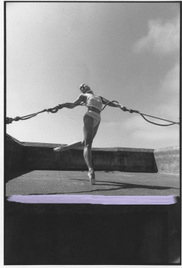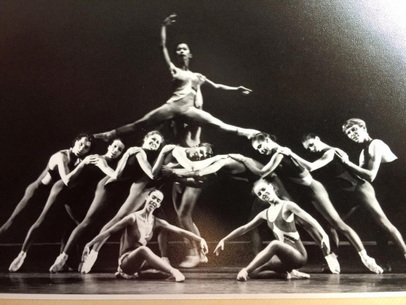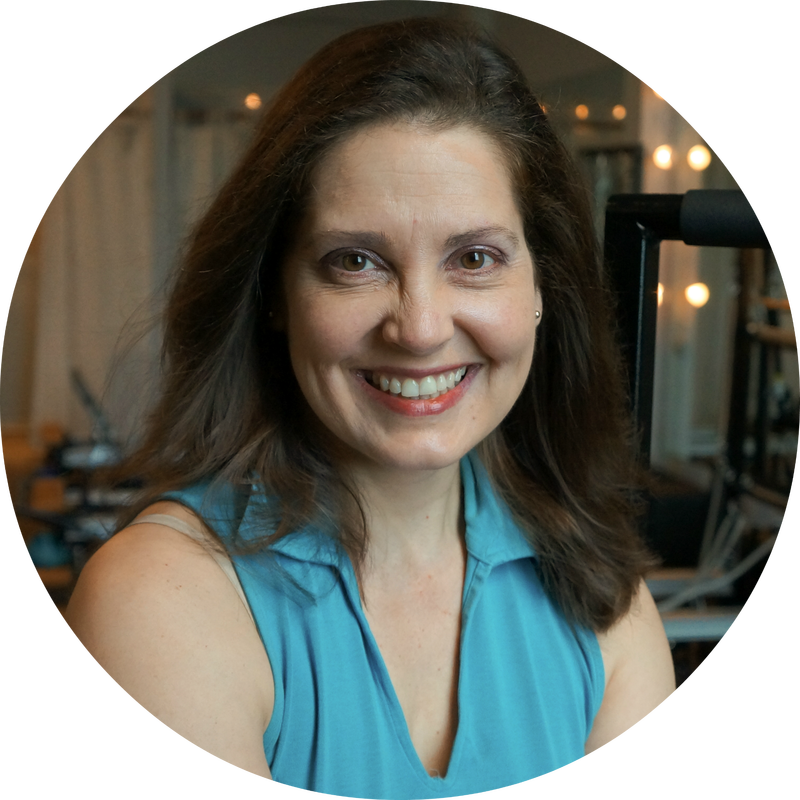 In light of the tragic (but not unexpected) news that Prince died from accidental Opioid overdose related to chronic pain, I feel compelled to share my story about my own chronic pain and how I have found the key not only to manage it, but to actually eradicate it. I only wish someone had been able to help Prince before it was too late. FOR THE FIRST HALF OF MY LIFE, I was absolutely passionate about ballet. I loved it, and did it all that I could, along with many other sports – soccer, bike riding, swimming, gymnastics and even softball, but ultimately ballet won out. At 13 I was an apprentice for the Dallas Metropolitan Ballet, at 17 I began dancing with the Dallas Opera, and at 21 I was dancing with Ballet West, one of the preeminent ballet companies in the country. I went on to dance professionally for another 12 years, working at various large and small companies in the bay area, including numerous seasons dancing in productions at the San Francisco Opera, where I appeared in productions along side to such luminaries as Eva Marton and Placido Domingo. As with all athletes who push the natural proclivities of their bodies to extremes on a daily basis, I developed a host of injuries. I sprained my ankles, tore my rotator cuff, wrenched my back, developed chronic knee and hip pain, and lots of foot pain. I accepted it was time to retire when my injuries had so limited my ability to do so that I no longer enjoyed it. Sadly for me, my injuries didn’t end with my retirement. I began the long journey of dealing with various aches and pains, consulting with doctors, orthopedists, physical therapists, chiropractors, personal trainers, etc. They all had their opinions and their ideas as to what I should/shouldn’t do, and what would help me, which ranged from being told to put a topical analgesic on my spine for the rest of my life, or have total disc replacement surgery. The former didn’t seem to be effective and the latter seemed extreme without any other prior intervention. Fortunately I had been introduced to Pilates at the Center for Dance Medicine at Saint Francis Hospital, in San Francisco, when my orthopedist, Dr. James Garrick, suggested I do it as part of my rehabilitation. Throughout my many stints in PT, I saw how this alternative method of exercising was able to “fix” me by strengthening weak muscles and correcting mal-adaptive movement patterns. Trusting in its ability to help me, I now turned to Pilates to see if it would be effective against my current complaints. I was able to accommodate the exercises to what was most troubling at the time, my back, and over time my arthritis pain went away. And why did this work, you ask? Because our bodies move in patterns, and pilates works on the whole body to rebalance muscle strength and correct maladaptive muscle firing patterns. Unfortunately, that wasn’t enough. Although my back was out of pain, other long-standing issues crept to the forefront, including chronic sacro-illiac dysfunction and bunion problems that were so painful I could barely walk a block. Now a decade past my retirement, yet still relatively young, I reluctantly made my way to the local town offices to obtain a handicap parking pass. To say I was depressed is an understatement, having gone from being an elite athlete to being in constant pain. And as much as I did pilates, which helped keep my core in good condition, I couldn’t figure out how or what to do to help with my foot. I did the pilates foot exercises, I went to the best dance podiatrist in NYC, the best dance related Physical Therapy in NYC, I did acupuncture, rolfing, foam rollers, yoga therapy balls, you name it. If there was a conference or seminar about how to relieve chronic pain I went to it. They all offered a variety of treatments, from traditional to non, and some of them helped in the short term, but nothing alleviated the pain for good. Until one day…. I was reciting my list of injuries to a colleague, but this time the response was a revelation: “Well, did you know this muscle (the one I had blown out years ago while dancing) is supposed to do this (work to align my bunioned big toe)?” No, I didn’t, in spite of having studied anatomy as part of my course work for my Pilates and personal training certifications, and also as an undergrad pursuing a dance degree. Additionally, I had seen countless NYC doctors and other practitioners, all of whom were told the exact nature of my injuries, and none of whom made the connection. Now, finally someone helped me put it together. If I strengthened the specific muscle that was not firing correctly in my foot, and got it working again, then I would realign the joint and it would no longer cause me pain. Realigning the toe joint would change my gait, which would cause me to realign my pelvis as well, which would relieve the chronic SI pain. I also started stretching the fascia between my toes that was stiff and tight and holding my toe in the wrong position. Lo and behold, as I did my exercises and stretches everyday, religiously, over the course of a year my foot got stronger. One day I woke up and was no longer in pain. This gave me a clarity of understanding that I am still astounded by today. You see, from a physics perspective, our bodies are amazing and complex structures, but they are just that – structures. While most of western medicine looks at a disease-based causation for any issue, a growing body of movement professionals believe many issues regarding chronic pain are actually structural in nature rather than caused by disease. Unfortunately, here’s where it’s upsetting – according to the World Health Organization, less than 3% of medical schools WORLDWIDE offer training in musculoskeletal issues outside of an orthopedic specialization, and even within orthopedics, the primary focus is on surgery. And yet, the second most common reason for a person to visit their doctor is for musculoskeletal pain. This explains why so many medical practitioners couldn’t explain why I was in pain all the time. They were looking for disease, not misalignment, atrophy, or mal-adaptive muscle firing patterns. Virtually every practitioner I saw over the years following my retirement had sought to treat my symptoms, but only one understood what I really needed to do – I had to find and fix the underlying problem. You see, what I now know for a fact is that the key to ending chronic musculoskeletal pain is finding the mal-adaptive muscle firing pattern, determining exactly which muscles are over-working and which that aren’t working at all, and then correct that pattern by turning the over active muscles off, and the under active muscles back on. It’s not enough to say in general -“get some exercise”. It’s not even enough to say “strengthen your quads”. It must be specific – “stretch your Illio-tibial band and strengthen your vasti medialis, while simultaneously strengthening your opposite internal obliques”. Only when you look at the overarching movement pattern that needs to be fixed will you begin to make progress in healing yourself. This is because correct alignment decreases the strain on the muscles, tendons and ligaments that may be inflamed and causing you pain. You may say – wait – that’s too complicated. Maybe, but think about it. Imagine if a tree branch fell on your house, took out six roofing shingles, knocked off three feet of the gutter over the window by your bedroom, and punched through the upper pane of the bedroom window. What would your response be if the insurance adjuster says “let’s just paint it blue and see how it goes”? Uhhh – No! And if they said “maybe you should clean the gutters in the front of the house, and buy some new blinds for the kitchen window”? Still no. It’s closer, but it still won’t fix it. You need and want someone to specifically fix the roofing tiles, replace the gutter and fix the window. The question is why then are we any less specific with repairing the muscular-skeletal issues that arise in our bodies? Maybe it’s because the doctors don’t know anything about it, maybe it’s because if we go for physical therapy the insurance companies don’t allow the therapist to treat your whole body but rather look at parts instead. Maybe because they all speak in generalities instead of specifics, thinking we can’t be trusted to do the exact right thing. Who can say. All I know is that once I figured out how to strengthen the specific deep foot muscles, and then also strengthen my opposite hip adductor muscles, I was also able to walk again – pain free. The other day, I did an amazing thing. My cousin was in town and wanting a tour, so we walked – from Columbus Circle to 30-Rock to Bryant Park and back to Times Square. All told, a little over two miles, without really stopping. Although my feet were definitely sore, I did it. Which is so much more than I could have done a year ago. I guarantee you can get off of any medication and out of chronic pain as well – you just need the right diagnostician. If you want more information or a free consultation ( in person or via Skype) you can email me at [email protected]. Marilyn Miller holds a B.A. from SUNY Purchase, is an A.C.E. Certified Personal Trainer, is a Stott Pilates™ Certified Pilates Equipment Instructor, A Pilates Method Alliance Certified Pilates Teacher, a PMA member, and a member of the International Association of Dance Medicine and Science (IADMS). She specializes in neuromuscular re-education and orthopedic rehabilitation and is currently studying to become a Neurokinetic Therapist.
1 Comment
|
AuthorMarilyn K. Miller ArchivesCategories |
Contact Us8 John Walsh Blvd.
|
Keep in touch |


 RSS Feed
RSS Feed